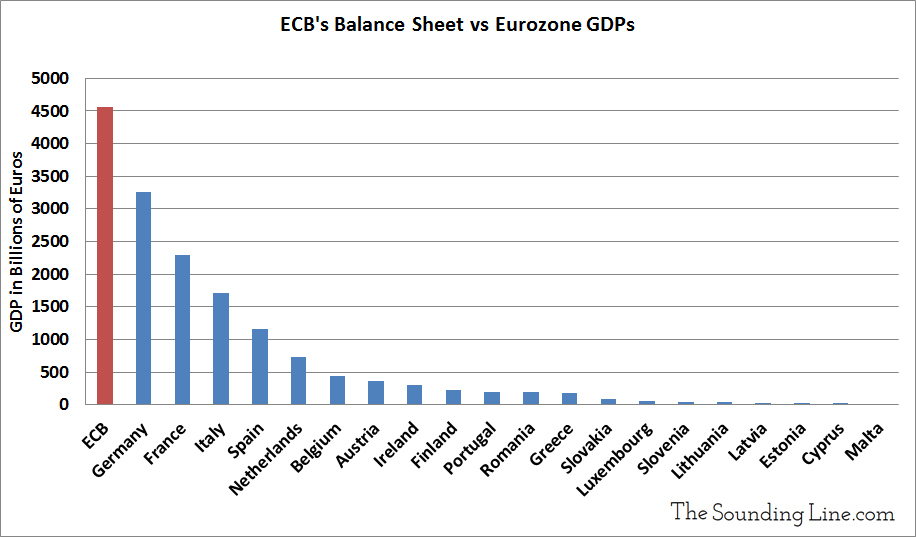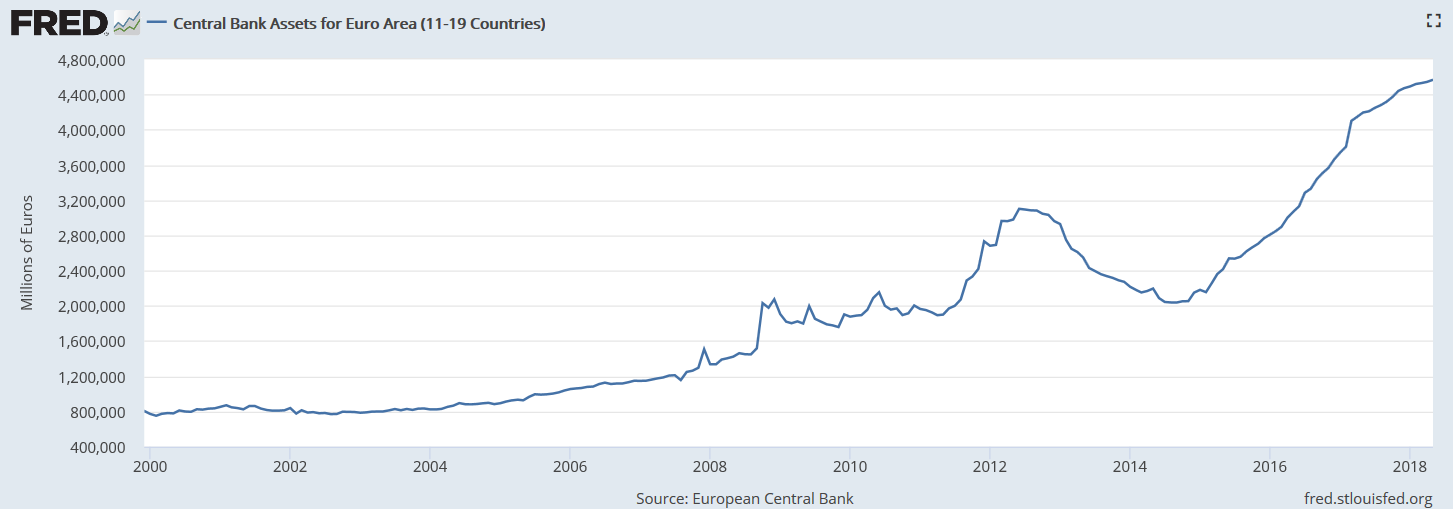Submitted by Taps Coogan on the 14th of June 2018 to The Sounding Line.
Enjoy The Sounding Line? Click here to subscribe for free.
With the ECB still insisting that it will end its QE program by the end of the year, it is worth taking note of just how massive the program has become relative to the Eurozone economy.
As the following chart shows, the ECB has amassed over €4.5 trillion ($5.4 trillion) of bonds through its QE program.
To put €4.5 trillion in perspective, it is over 40% of the annual GDP of the 19 countries comprising the Eurozone (€11.35 trillion). Keep in mind that the Federal Reserve’s balance sheet never exceeded 25% of US GDP. In fact, the ECB’s balance sheet is bigger than the annual GDP of any single country in the Eurozone, including Germany, and growing far faster. The ECB’s balance sheet has grown by 8.9% since this time last year, far faster than the overall Eurozone economy (2.4%), faster than the fastest growing economy in the Eurozone (Ireland, 7.8%), and by an amount far greater than the combined GDP growth of the entire Eurozone (€372 vs €278 billion). In other words, the ECB has been printing money and buying Eurozone debt roughly 33% faster than the economy of the Eurozone has been growing. As if that weren’t enough, the ECB bought significantly more bonds in the last year than the entire increase in the national debts of all the Eurozone countries combined in 2017.
To repeat that, the ECB is printing money and monetizing debt faster than all the governments in the Eurozone combined can borrow.

All the while, the ECB has held its benchmark interest rates at record negative lows. All of this, the massive liquidity creation, the interest rate suppression, and the government debt bailouts, and the Eurozone has only managed a feeble 2.4% rate of economic growth, and that appears to be slowing according to the most recent economic figures.
Now the ECB wants to end their QE program and wants you to believe that doing so will be smooth sailing.
The ECB’s balance sheet has grown so large that simply maintaining it at its current size and reinvesting maturing bonds will continue to finance large portions of new debt issuance in the Eurozone. However, it won’t take much of a slow down in growth to send growth to zero and it won’t take much of an increase in borrowing costs to bankrupt heavily indebted governments like Italy, Greece, and Spain.
That leads us to wonder what the ECB’s monetary policy would look like in an actual recession. It is quite hard to imagine.
P.S. If you would like to be updated via email when we post a new article, please click here. It’s free and we won’t send any promotional materials.
Would you like to be notified when we publish a new article on The Sounding Line? Click here to subscribe for free.



The cloud cover of ZIRP will clear at some point and this problem that is so big it will be visible from space.
I am very curious where is all this money going? It is new debt, not being used to pay off old debt. Most of this mountain hasn’t rolled over yet. Corporate buybacks account for some of it but not all of it. EU economic activity isn’t high enough to soak it up for inventory or investment.
Welfare?